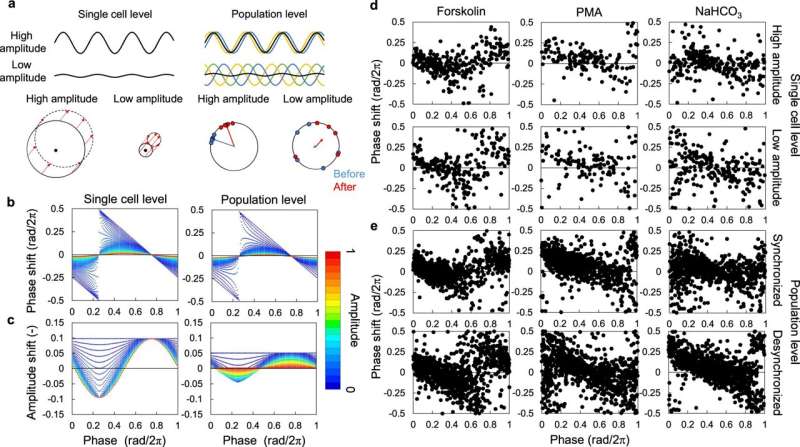This article has been reviewed according to Science X's editorial process and policies. Editors have highlighted the following attributes while ensuring the content's credibility:
fact-checked
peer-reviewed publication
trusted source
proofread
A simplified method to assess the synchronization properties of the body clock

Numerous organisms are equipped with circadian clocks (internal body clocks) that help them adapt to daily environmental changes in light and temperature. For synchronizing the clock phase (timing) with these environmental rhythms, the circadian clock alters its phase in response to synchronizing stimuli such as light and temperature. This is known as a phase response. It is important to note that the magnitude of this response varies, depending on the phase of the stimulus received.
These diverse phase responses are collectively represented in a single graph called the phase response curve (PRC), which illuminates the relationship between the circadian clock and the internal and external synchronizing stimuli. However, traditional methods of obtaining a PRC require multiple measurements of the phase response to stimuli at different times of day, a process that is both time-consuming and expensive.
In a new study published in Nature Communications, researchers adapted a previously developed PRC estimation method, originally used in the context of the plant circadian clock, for use in the mammalian clock. This innovative method involves measuring the phase response to stimuli in a desynchronized state (also known as a singularity response, SR), where each cell's timing varies. This allows for the evaluation of the circadian clock's response characteristics to diverse stimuli.
The team demonstrated that SR can be observed in mouse- and rat-cultured cells and that the PRC for temperature and chemical stimuli can be assessed from a single measurement. Additionally, measurements using tissue cultures derived from mice showed that the phase response to identical synchronizing stimuli varies depending on the tissue involved. These results could be applied for developing therapeutic drugs for jet lag and circadian rhythm disorders.
More information: Kosaku Masuda et al, Singularity response reveals entrainment properties in mammalian circadian clock, Nature Communications (2023). DOI: 10.1038/s41467-023-38392-x
Journal information: Nature Communications
Provided by University of Tsukuba




















